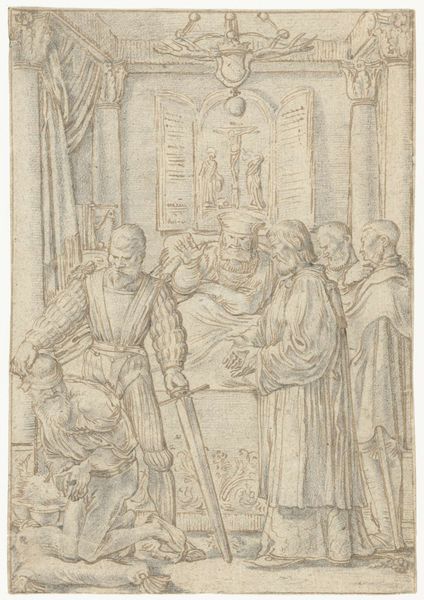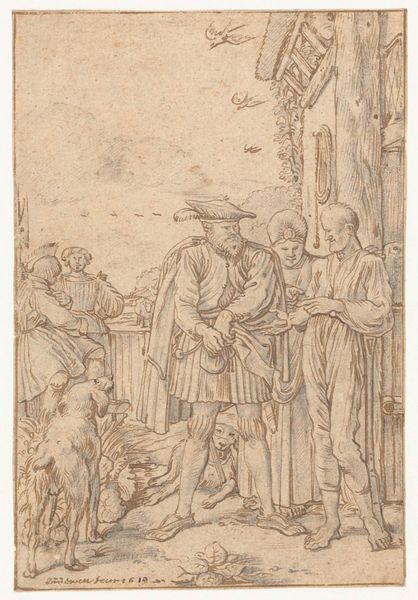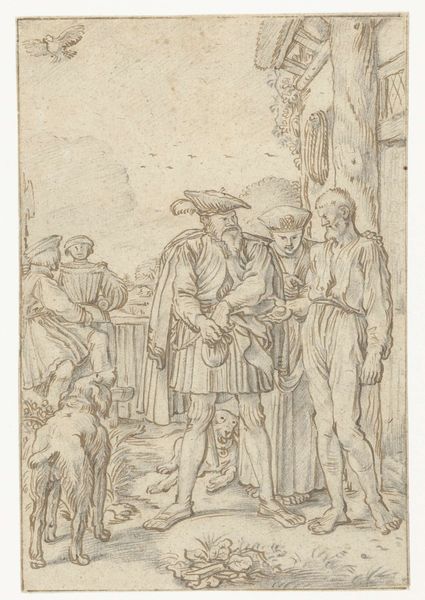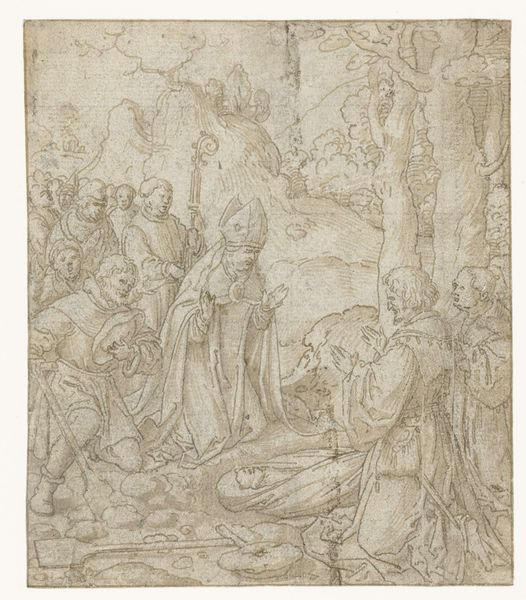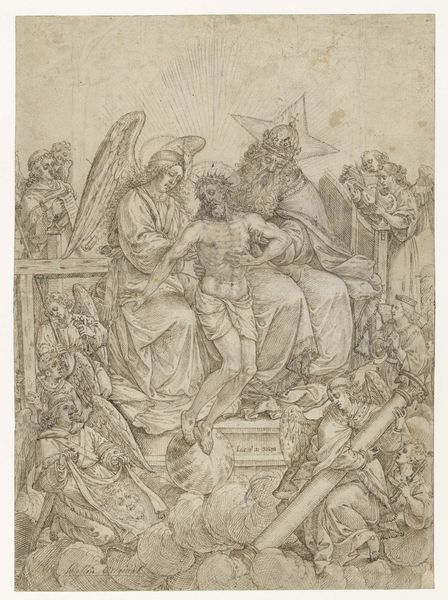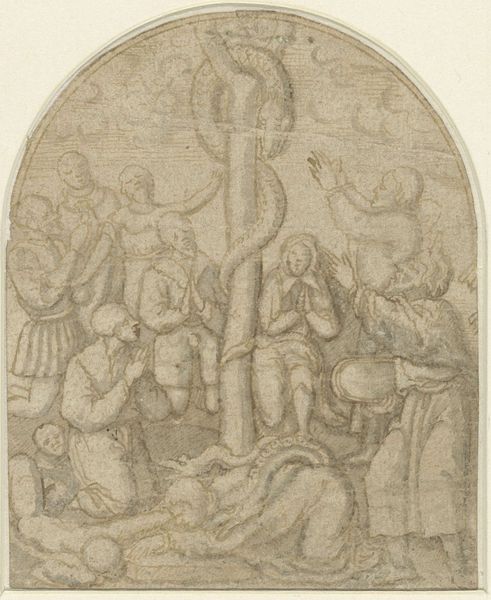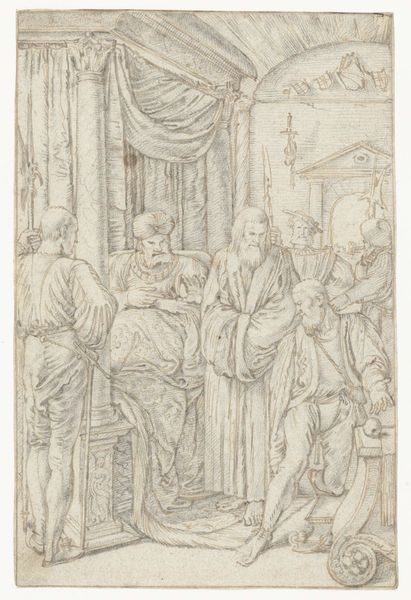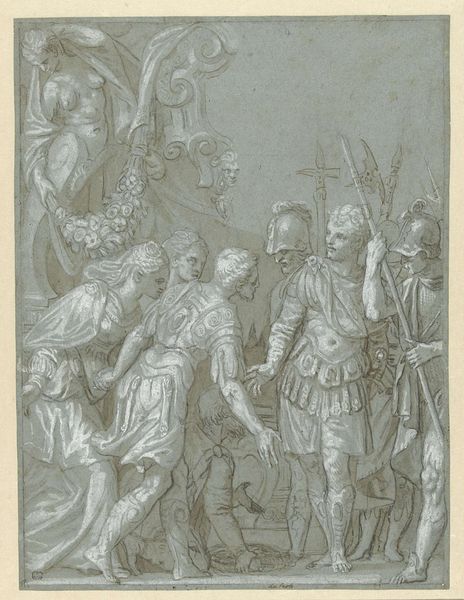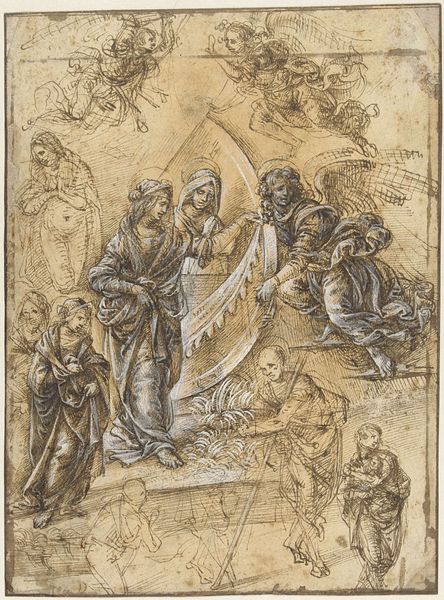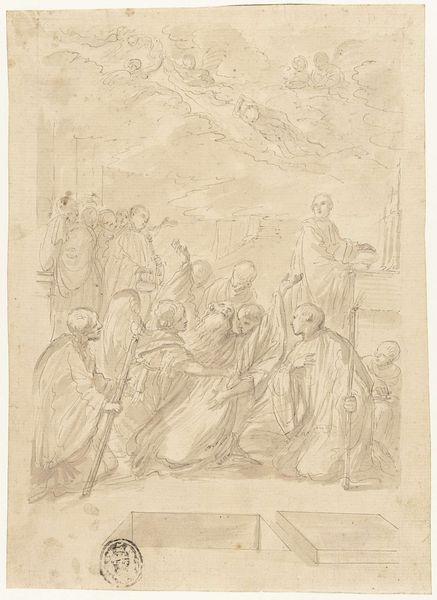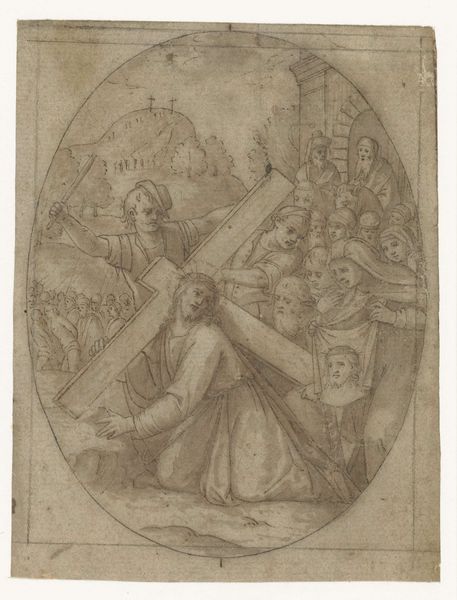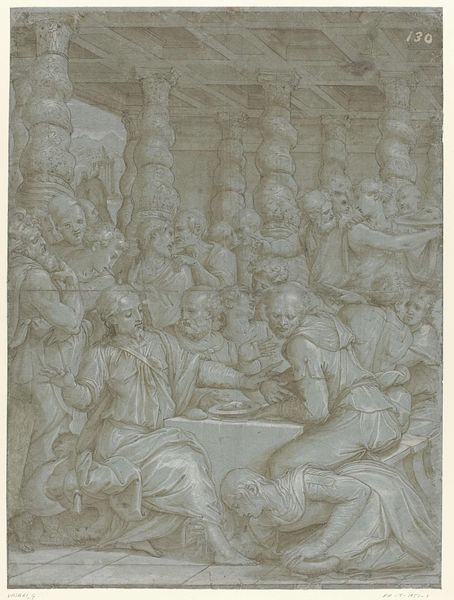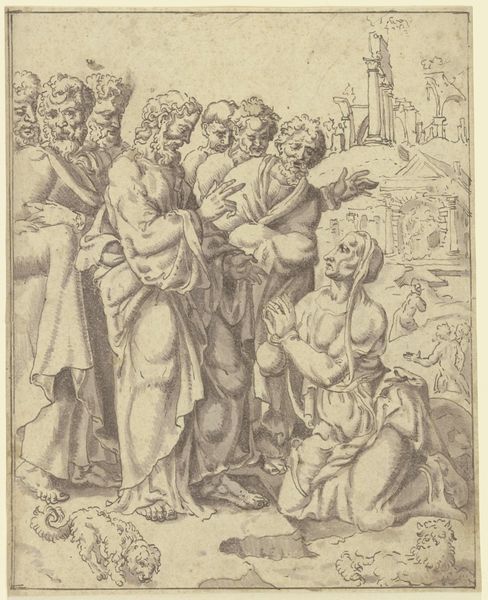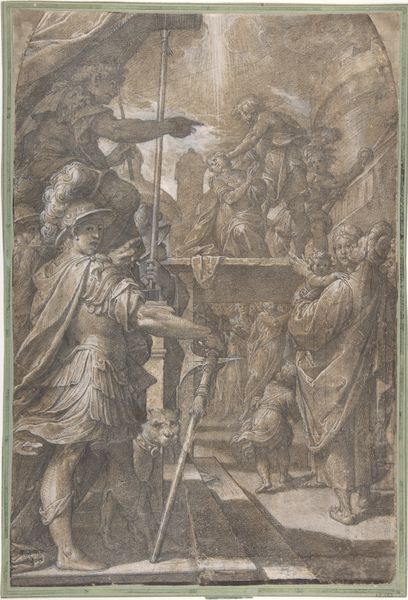
drawing, etching, ink, pencil, pen
#
drawing
#
narrative-art
#
dutch-golden-age
#
pen sketch
#
etching
#
pencil sketch
#
etching
#
figuration
#
ink
#
pen-ink sketch
#
pencil
#
pen work
#
pen
#
history-painting
Dimensions: height 158 mm, width 110 mm
Copyright: Rijks Museum: Open Domain
Editor: This is "Terechtstelling van de baljuw," or "Execution of the Bailiff," a pen and ink drawing by Willem Pietersz. Buytewech, created around 1618. The scene is intense; it has this poised and tense feeling of justice, and impending doom. What is your take on the context of this work? Curator: Indeed, there is a strong sense of deliberation coupled with cruelty. It is hard to look at such overt display of inequitable power and not reflect on our modern legal system. But, Buytewech's work here speaks volumes about power dynamics in 17th-century Dutch society. Note the bailiff, kneeling and blindfolded before his executioner; it demands we ask uncomfortable questions about whose justice is being served, and at what cost. What does it mean when a figure of authority becomes the condemned? Editor: That's powerful. It makes you consider not only the event, but the social commentary embedded within. Curator: Absolutely. Think about the composition – the central placement of the executioner, the positioning of the bailiff – these aren’t accidental choices. They underscore the spectacle of power, of flipping the script. Do you think Buytewech is explicitly condemning or condoning the scene? Editor: That is really challenging. I can see that the scene represents both justice and brutality...Maybe Buytewech aimed to provoke dialogue rather than endorse any specific idea? Curator: Precisely! By refusing to provide a simple answer, Buytewech encourages us to dissect the ethics of authority and law, opening conversations about the complexities of justice. Editor: This has totally transformed my perspective on the work, considering these questions of power and social commentary that it sparks. Thank you. Curator: My pleasure. Hopefully, we'll keep in mind that artworks from the past can shed light on our present values and structures.
Comments
No comments
Be the first to comment and join the conversation on the ultimate creative platform.
